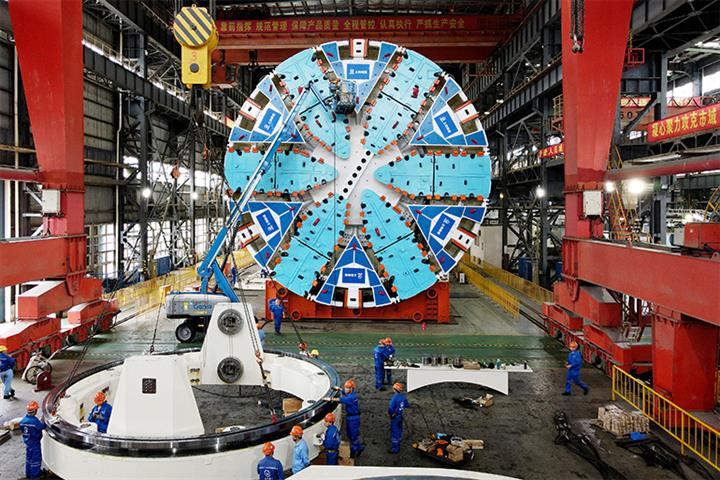 Caixin’s China Manufacturing PMI Bounces Back Into Positive Territory in October
Caixin’s China Manufacturing PMI Bounces Back Into Positive Territory in October(Yicai Global) Nov. 1 -- A widely watched independent survey showed China’s manufacturing activity moved into expansion territory last month despite power restrictions and raw material shortages that hindered production.
The Caixin purchasing managers’ index for manufacturing was 50.6 in October, up from 50 in September, according to data published today by financial media group Caixin. A mark above 50 indicates expansion. The PMI fell below 50 in August for the first time since last May.
The private survey, which focuses on small and mid-sized businesses and has a sample size of 430, was more upbeat than official data released by the National Bureau of Statistics yesterday that canvasses 2,000 big companies.
According to the NBS, factory activity contracted for a second month in a row in October, falling to the lowest level since March last year. The official manufacturing PMI dipped to 49.2 from 49.6 in September, marking a seventh straight month of decline.
China’s economy was still under much pressure in October, despite the manufacturing rebound, said Wang Zhe, a senior economist at Caixin’s think tank, noting that supply constraints have become the main factor affecting the economy.
The Caixin manufacturing production index contracted for a third consecutive month. Surveyed companies generally reported that power cuts, raw material shortages and rising costs limited output at the start of the fourth quarter.
But the new order index continued to rise in October, hitting a four-month high, as the domestic demand rose. Meanwhile, the new export order index contracted for a third straight month amid weak overseas demand caused by reduced orders, marketing difficulties, and delivery blockages due to the pandemic. Some firms also reported negative consequences from higher sales prices.
Factory purchase prices have increased faster than ex-factory prices for several months, putting great pressure on the production activities of downstream firms, Wang noted.
As inflationary pressure was high, the purchase price index soared in October to its highest since 2017, remaining in positive territory for a 17th month in a row. That showed that rising prices of raw materials, energy, and freight have driven up costs at manufacturers. The ex-factory price index hit a five-month high in October, showing that costs pressure has been partially transmitted to downstream clients.
The economy may have to face further difficulties amid the new Covid-19 outbreak which began spreading across central and western China in late October, Wang said, adding that policies need to give an overall consideration to effective prevention and control of the epidemic to sustain the normal economic order.
Editor: Futura Costaglione